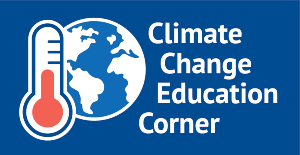In 2015, recognizing the existential threat posed by global climate change and the need for coordinated action, nearly 200 nations adopted the Paris Agreement, a framework for addressing the climate threat on an international scale. A central goal of the agreement was this:
Holding the increase in the global average temperature to well below 2°C above pre-industrial levels and pursuing efforts to limit the temperature increase to 1.5°C above pre-industrial levels, recognizing that this would significantly reduce the risks and impacts of climate change.
Setting such an explicit target — holding global average temperature increases below 2°C and preferably below 1.5°C — has the advantage of being simple, clear, and measurable. Considered in isolation from the wealth of evidence and scientific reasoning underpinning the goal, such small, round numbers are likely to strike us as either trivial or arbitrary, or both. But make no mistake, this seemingly narrow target is far from trivial and was not chosen lightly. The official report justifying it, prepared by a group of nearly 250 climate scientists from more than 40 countries (and reviewed by a separate group of another 400 scientists), clocks in at 630 pages, including more than 150 pages of citations, a 22-page glossary, and 10 pages devoted solely to defining acronyms.
But even such a colossal effort to explain how important that 1.5°C limit is might still run up against our natural tendency to find so small a temperature difference unexciting.
 Before we continue, we need to address the fact that Americans think in degrees Fahrenheit, not Celsius. Most Americans really don’t have an intuitive sense of what a 1.5°C change feels like. If that number were expressed in degrees Fahrenheit — 2.7°F — we Americans would have a slightly better feel for the magnitude of change. That still might not seem like much, but there are certainly times when a 2.7°F increase would be a cause for concern. For example, if one of my children had a fever of 101.3°F, 2.7°F above normal, it would certainly get my attention.
Before we continue, we need to address the fact that Americans think in degrees Fahrenheit, not Celsius. Most Americans really don’t have an intuitive sense of what a 1.5°C change feels like. If that number were expressed in degrees Fahrenheit — 2.7°F — we Americans would have a slightly better feel for the magnitude of change. That still might not seem like much, but there are certainly times when a 2.7°F increase would be a cause for concern. For example, if one of my children had a fever of 101.3°F, 2.7°F above normal, it would certainly get my attention.



